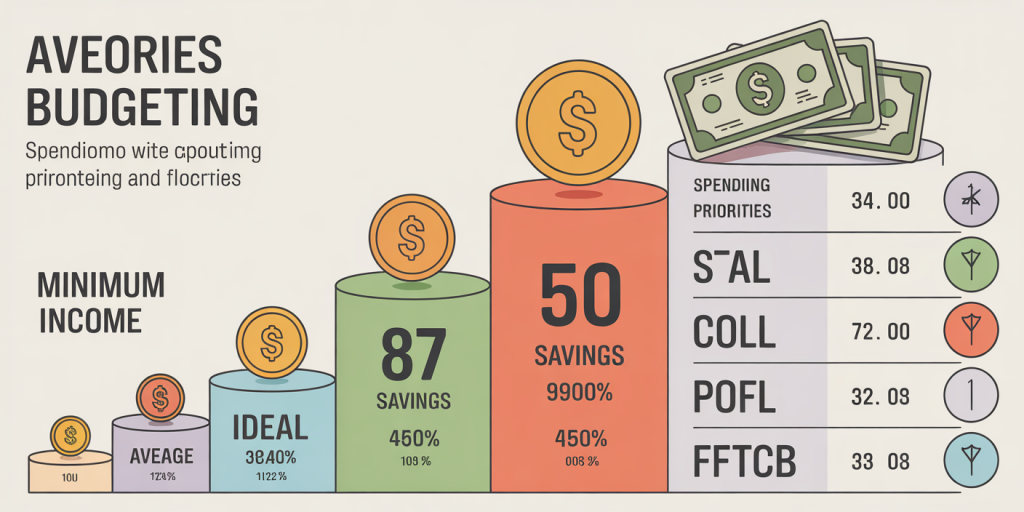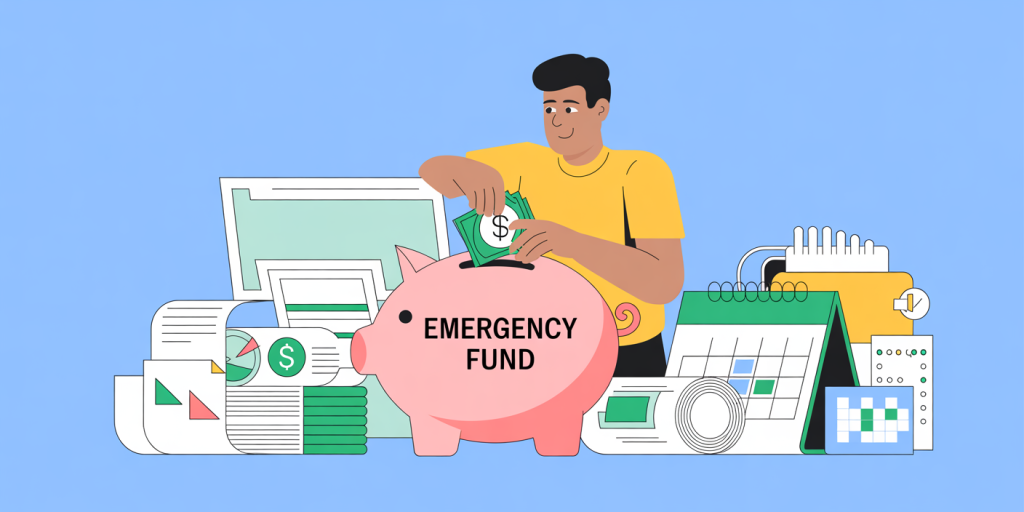Financial Management for Freelancers: How to Handle Irregular Income
Freelancing has emerged as a popular career choice in recent years, driven by the desire for flexibility, autonomy, and the opportunity to pursue passion projects. According to a 2023 report by Upwork, over 59 million Americans freelanced in 2022, representing approximately 37% of the workforce. However, freelancing also presents unique financial challenges, with irregular income being the most significant hurdle. Unlike traditional salaried jobs with predictable paychecks, freelancers often face unpredictable cash flow, making financial management a critical skill for sustained success.

Managing fluctuating income streams effectively ensures stability, reduces stress, and allows freelancers to build long-term wealth. This article delves into actionable strategies that freelancers can employ to manage their finances wisely, backed by real-world examples and data, helping turn variable income into a manageable and forecastable resource.
Understanding the Challenges of Irregular Income
Irregular income means freelancers may earn highly variable amounts each month. These fluctuations arise from diverse factors such as client payment delays, seasonal demand changes, or project-based work. For example, a freelance graphic designer might earn $5,000 one month and only $1,200 the next, depending on project availability.
This inconsistency complicates budgeting, saving, and planning for taxes. A 2021 survey by the Freelancers Union found that 62% of freelancers reported difficulty managing cash flow compared to traditional employees. Without stable income, covering fixed expenses like rent, utilities, and insurance becomes challenging, leading many into debt cycles. Recognizing these challenges is the first step toward effective financial management tailored for freelancers.
Creating a Baseline Budget with Variable Income in Mind
Effective budgeting is the cornerstone of managing irregular income. Freelancers must first establish a baseline budget — a realistic estimation of essential monthly expenses that must be covered regardless of income levels. This includes rent, groceries, utilities, transportation, insurance, and minimum debt payments.
A practical method is to calculate the average monthly expenses and add a buffer (usually 10-15%) for unexpected costs. For instance, if fixed expenses total $2,500, setting a baseline budget of around $2,750 can provide extra security. Once the baseline is determined, freelancers should arrange their spending priorities, distinguishing between needs and wants.
To navigate income spikes and dips, a tiered budgeting approach works best. Consider three budget tiers aligned with income scenarios: minimum income, average income, and ideal income. During lean months, only essential expenses are covered, while surplus income months can accommodate discretionary spending or savings goals.

| Budget Tier | Monthly Income Range | Spending Priority | Savings Allocation |
|---|---|---|---|
| Minimum Income | $0 – $2,500 | Essential expenses only | Use emergency funds |
| Average Income | $2,501 – $4,000 | Essentials + some wants | Moderate savings |
| Ideal Income | $4,001+ | Full spending + investments | Maximize savings & investing |
This framework helps freelancers adjust spending dynamically, preventing overspending during low-income periods and optimizing surplus cash flow.
Building and Maintaining an Emergency Fund
An emergency fund is indispensable for freelancers due to income unpredictability. Financial advisors recommend saving at least three to six months’ worth of essential expenses in a liquid, easily accessible account. This fund acts as a financial buffer during dry spells, helping cover baseline living costs without accruing debt.
An example is Jane, a freelance copywriter, who earns an average of $3,500 monthly but sometimes experiences months as low as $1,200. By maintaining an emergency fund of $10,000, she ensured peace of mind and uninterrupted bill payments during lean months.
Freelancers should prioritize building their emergency fund as soon as possible, gradually setting aside a fixed percentage of their income—typically 10-20%. Automating transfers to this fund each month, regardless of income variability, reinforces discipline. Tools like high-yield savings accounts and money market funds can also enhance growth while preserving liquidity.
Managing Taxes and Deductions Effectively
Freelancers are responsible for managing their taxes, which can be complicated due to irregular earnings. Unlike salaried employees with tax withholding, freelancers must estimate quarterly tax payments and track deductible expenses meticulously.
According to IRS data, freelancers typically pay self-employment tax of 15.3%, covering Social Security and Medicare, in addition to income tax brackets ranging from 10% to 37%. Failure to make timely estimated tax payments often results in penalties, making proactive tax management critical.
A practical approach is to calculate an approximate tax liability by multiplying gross income by a tax factor (typically 25-30%) and setting aside that amount in a separate account each month. For example, if a freelancer earns $4,000 in a month, $1,000 to $1,200 should be saved to cover taxes.
Beyond tax withholding, freelancers should maximize deductible expenses such as home office costs, software subscriptions, professional development, health insurance premiums, and business-related travel. Using accounting software like QuickBooks or FreshBooks can simplify record-keeping and help generate accurate financial reports.
| Aspect | Freelancer Approach | Traditional Employee Approach |
|---|---|---|
| Tax Withholding | Estimate and pay quarterly | Employer withholds automatically |
| Deductible Expenses | Fully deductible business expenses | Limited deductions |
| Retirement Saving | Self-funded (IRA, Solo 401(k)) | Employer-sponsored plans |
Awareness and planning around taxes can save freelancers thousands annually and prevent cash flow shocks during tax seasons.
Diversifying Income Streams to Reduce Risks
Relying on a single client or project type amplifies income irregularities and risk exposure. Many successful freelancers diversify their income sources, buffering against market or client-specific downturns. Diversification might include offering different services, targeting new industries, or creating passive income streams related to one’s expertise.
Consider the case of Tom, a freelance web developer, who initially depended solely on project-based website builds. After experiencing a slump, he diversified by creating online courses and offering monthly website maintenance contracts, leading to more consistent monthly revenue.
A survey by Bonsai in 2023 reports that 45% of freelancers with multiple income streams experienced 30% less income variability compared to those relying on one source.
Diverse income sources also open growth avenues and increase professional resilience. Freelancers should regularly evaluate market demand, invest in skill development, and explore opportunities complementary to their core services.
Planning for Future Financial Stability and Growth
Looking beyond immediate earnings and expenses, freelancers should integrate long-term financial planning, including retirement savings, insurance, and investments. The absence of employer-sponsored benefits makes self-funded retirement plans like IRAs and Solo 401(k)s essential.
Data from the National Institute on Retirement Security (2022) reveals that nearly 40% of independent workers have no retirement savings, exposing them to future financial insecurity.
Additionally, freelancers should secure adequate health, disability, and liability insurance protecting against unforeseen events. A failure to plan for downturns could jeopardize both personal and professional stability.
Creating a financial plan that incorporates budgeting, emergency savings, tax strategy, and diversified income, while also addressing long-term goals, fosters confidence and security. Tools like financial advisors, budgeting apps, and investment platforms can aid freelancers in making well-informed decisions.
Navigating Future Trends in Freelance Financial Management
The gig economy is evolving rapidly, with technology and policy changes shaping the future landscape of freelance work. Advances in fintech are streamlining financial management through AI-powered budgeting, tax automation, and real-time income tracking. Platforms such as Deel and Ramp are facilitating contractor payments and expense management globally, reducing administrative burdens.
Legislation aimed at improving freelancer protections and benefits, such as portable benefits programs and standardized gig worker classification laws, promise to alter the financial ecosystem for independent workers. Recent state-level initiatives in California and New York seek to provide greater wage security and access to healthcare benefits.
Moreover, increasing awareness of freelancer financial challenges is prompting greater availability of tailored financial products. For example, some banks now offer zero-fee business checking accounts designed for freelancers with cash flow tools.
Freelancers who proactively adapt to these innovations and policy shifts can better manage their finances, turning irregular income from a challenge into an advantage. Embracing continuous learning, leveraging technology, and prioritizing financial health will be the keys to thriving in the future freelance economy.
In summary, managing irregular income requires freelancers to adopt rigorous budgeting, savings, and tax strategies coupled with diversified income streams. Building an emergency fund and planning for long-term financial goals provide stability through ups and downs. As the freelance sector continues to grow and innovate, staying informed and adaptable will ensure freelancers not only survive but thrive in this dynamic environment.

